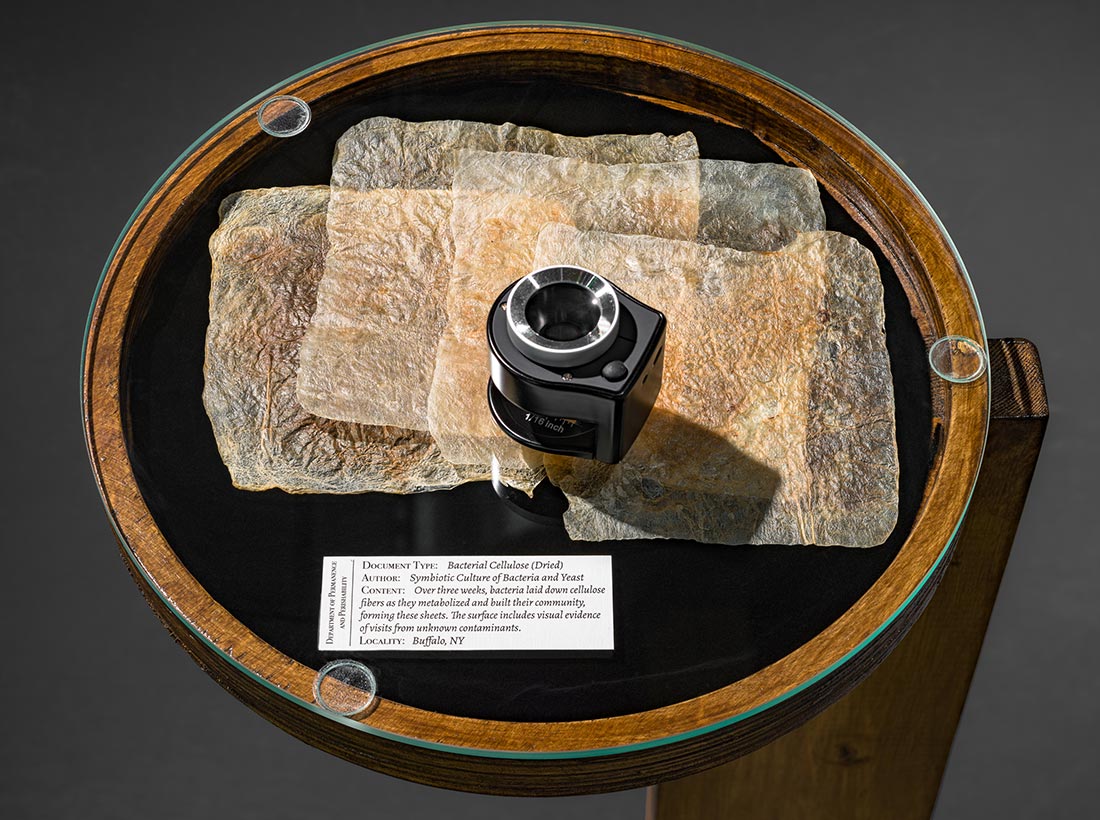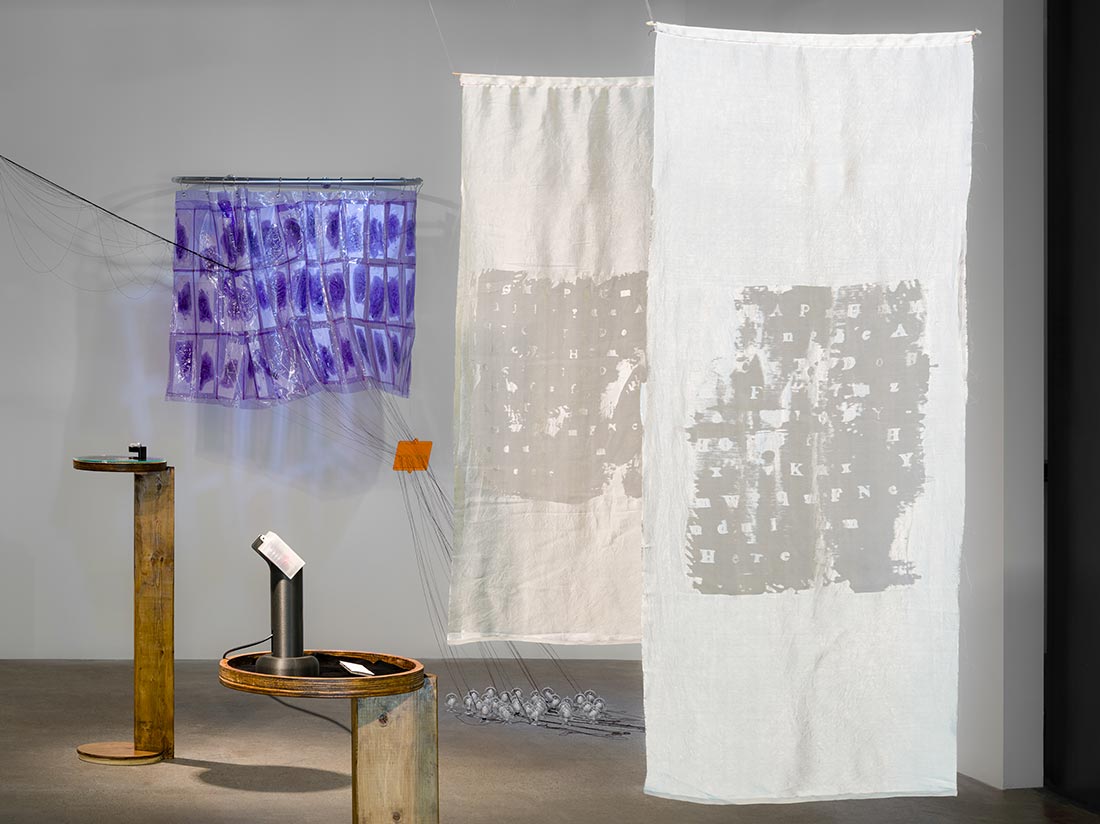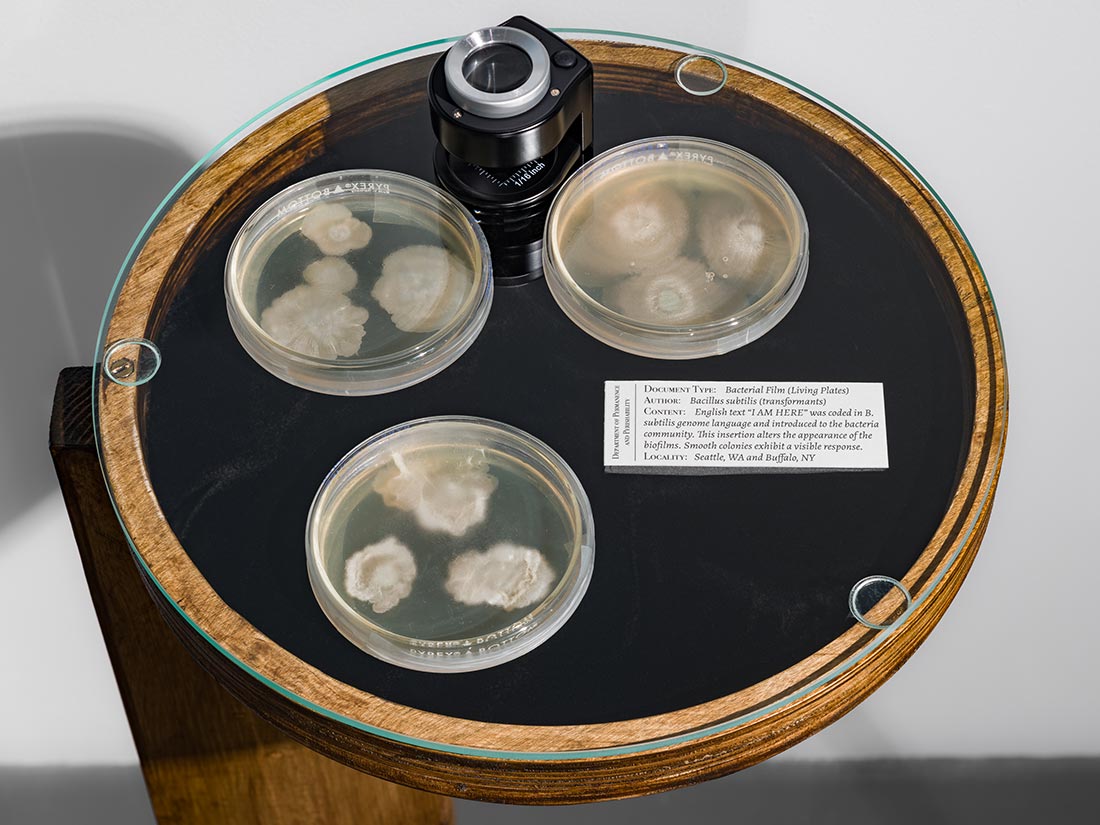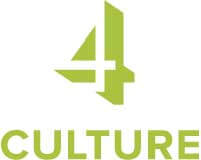Information Immortality: Althea Rao experiments with living data centers in Commit to Memory, Know it Will Perish

A few years ago, Althea Rao was talking with a researcher friend about a concert Beyoncé had recently played at Lumen Field when he started to describe the collective memory shared by the people who’d seen the show—specifically the physical heft of it.
“Memory has mass,” he told her, explaining the material foundations of it in neurons and brain cells. “I was mesmerized,” Rao says, recalling the moment.
The idea took root in her, becoming the genesis for a new body of artwork, including the pieces currently on view in her Gallery 4Culture exhibition, Commit to Memory, Know it Will Perish, which explores the preservation of information in DNA as a way to provoke people to stop and think about the data practices that increasingly shape modern life.
With a background in journalism and film, Rao is also a researcher of sorts; she’s currently finishing up her Ph.D. in the DXARTS program at the University of Washington, which combines creative and research practices to reimagine relationships to technology.
“Data, recorded history, memory, documentation—I kind of categorize all of those as a very similar thing,” Rao says. “They’re all referring to the act of making marks to recording something that had happened in a different form.” She points out that “mark-making is something humans have always done. We’ve carved into the rock, we’ve pinched fingernail marks into clay bodies. We’ve done all sorts of things, like tattoos.”

Around the same time Rao started thinking about the mass of memory, she also learned about human composting, and the “material cycle of the natural body being broken down, going into the soil. It becomes nutrients and those nutrients help facilitate plant growth and plants became the food for something else, which eventually become nutrients for people,” she says. Intrigued by these transformative biological processes, she began experimenting with yeast, as evident in “Bacterial Cellulose (Dried),” a symbiotic culture of bacteria and yeast.
She also followed the work of Iraqi American artist Wafaa Bilal, whose Grain of Wheat: Cultivating Hybrid Futures in Ancient Seed DNA project encoded a scan of an ancient sculpture into the DNA of an ancient wheat seed. The possibilities of encoding human information into DNA molecules captivated her.
“Not only is it at a scale that I can’t really see,” she says, “it has the possibility of transcending my generation because DNA is something that gets passed on. As the hosting cell is alive, it has the ability to duplicate—and that is a kind of immortality.”
That sounds like science fiction because, it is, for now at least. The work in Rao’s current exhibition is speculative, tapping into biotech in order to pose questions about the future. She’s interested in the “surveillance capitalism” that systematically tracks people’s behavior to generate profit, collecting fragment of data that “aren’t really records of you or I as person,” Rao says.
Searching for a kind of data extraction that would hold truer human records, she turned to hair, collecting used strips of wax from salons around Seattle. (She made a consent form, though she’s not convinced the salons used it much.)
Then she started thinking about the places where we can intentionally stash information. “Of course, the cloud has material foundations in data centers that have energy impact, land use, conflict with community,” she says. “So what are other ways information can be stored? Let’s say information storage in the future is no longer with data center, but on a molecular level, then what would data center look like?”

To make the work in Commit to Memory, Know it Will Perish, she partnered with a researcher at the University at Buffalo as well as with the Molecular Information Systems Lab at UW and set about encoding a simple phase into DNA molecules: I am here. She then introduced these modified molecules to bacteria to see what information they would take up and how they would change as a result. The effects of this weren’t visible in a single bacterium, but they were visible in the biofilm of bacterial colonies, which became smooth when it took up the modified DNA molecule.
While conducting these experiments, Rao confronted the ethical issues raised by synthetic molecular modifications. Clearly the bacteria she was working with didn’t consent to holding human information, and what reason would they have to do so, even if they could?
“What if instead of thinking the cell as a passive hosting body, what if we considered them a collaborator in this process? An important part of this work was me searching to find a way that I can encode a piece of human information in the genomic form but have this piece of information meaningfully interact with the organism.”
She describes sitting in the lab with her collaborator in Buffalo. “We were just going through plates [under the microscope],” she says. “We did a lot of rituals, almost like we started talking to the plate. Like, please manifest. Please show up, make yourself known. That part is more about faith, trusting that something is there and that you can find it.” Some of those plates are now among the works on view in the gallery.
Rao hopes that in viewing the exhibition, viewers will pause to consider the implications of today’s data practices. “Just having the mass data center itself is not enough. The information is not enough. There needs to be a knowing mind to know them and synthesize them and understand what they mean,” she says. “There is so much joy in curiosity, in knowing and making sense of things on our own.”
Commit to Memory, Know it Will Perish is on view through Aug. 7. A closing reception will be held from 6:00–8:00pm on Thursday, August. 7.
